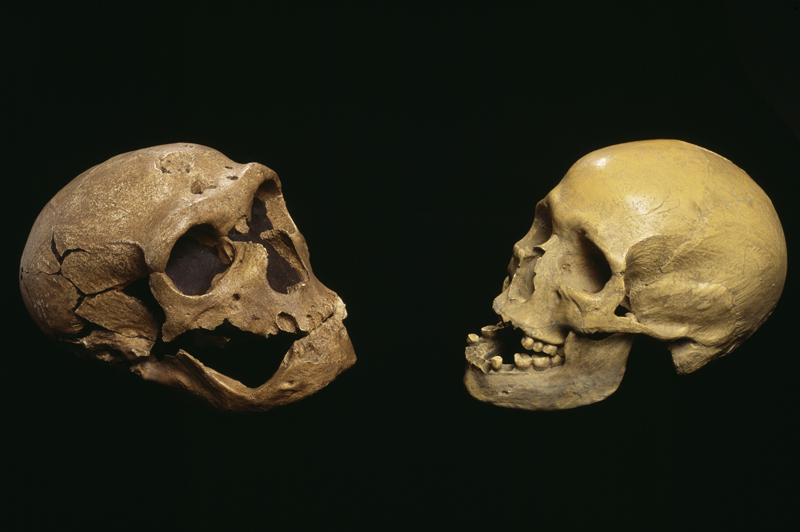Neanderthal DNA Handed Down Through Millenia Makes Modern Humans More Sensitive to Pain
Posted on Categories Discover Magazine

Genetic variants inherited from Neanderthals make modern-day people more likely to suffer pain when poked with a stick, geneticists have found.
The Neanderthal variants involve three small changes to the SCN9A gene, which provides instructions for building highly important sodium channels in certain nerve cells. These protein structures permit sodium ions to flow into the cell, readying it to fire and communicate with other nerve cells.
In this case, the variants seem to lower the threshold at which pain-detecting neurons fire and alert the rest of the nervous system to a threat.
“Our findings suggest that Neanderthals may have been more sensitive to certain types of pain,” said Kaustubh Adhikari, a geneticist at University College London, in a statement. “But further research is needed for us to understand why that is the case, and whether these specific genetic variants were evolutionarily advantageous.”
What Does Neanderthal DNA Tell Us About Our Pain Threshold?
A 2020 study first identified a link between the Neanderthal substitutions and greater pain using the UK Biobank, which contains genetic information for a half-million people in the U.K. Among those who had also answered a questionnaire about pain, 0.4 percent carried the variants.
The current study went further and investigated what types of pain were affected, whether from poking (mechanical) or heat or pressure. They only found a strong correlation between mechanical pain and the gene variants, suggesting that the sodium channel changes only produced a difference in those cases.
The researchers carried out the pain experiments on a group of 1,963 people from Colombia, about 6 percent of whom carried all three variants.
Read More: Why Does Pain Hurt?
Who Has the Most Neanderthal DNA?
The researchers also analyzed the genetic region that includes SCN9A in 5,971 participants from Brazil, Chile, Colombia, Mexico, and Peru. The three Neanderthal variants were found most frequently in populations with higher proportions of Native American ancestry, such as the Peruvian population. The group has an average of 66 percent Native American ancestry per person, the highest rate found throughout Central and South America.
The researchers speculated that the correlation may be a result of “population bottlenecks” or other quirks stemming from when the descendants of the modern humans and Neanderthals eventually migrated to the Americas. (That journey from Asia to North America happened sometime between 13,000 years and 21,000 years ago, depending on who you ask.)
Again, further research is necessary to investigate whether these variants and the higher pain sensitivity they convey would have been advantageous during evolution. Past research has tied Neanderthal genetic “introgression” into modern human DNA to our nose shape, susceptibility to COVID-19, hair color, sleeping patterns, and even our emotional states.
Read More: How Much Neanderthal DNA Do Humans Have?